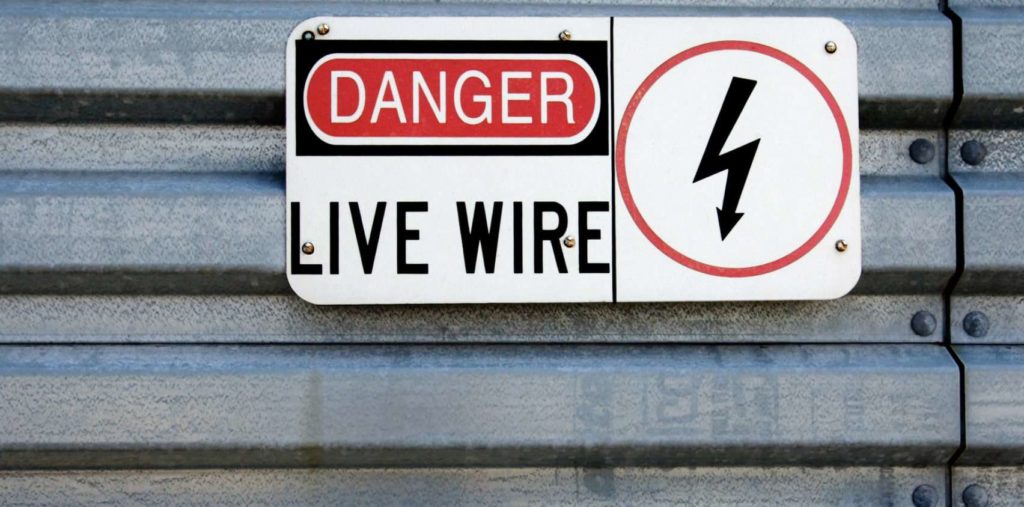Cloth wiring is an old form of wire insulation that uses cloth instead of PVC plastic. Its original purpose was to shield and protect electrical conductors in the property.
This was prevalently used in houses built during the 1920s to 1960s but was discontinued due to fire, electrical, and safety hazards it caused.
Among the issues of using cloth wiring are brittleness, openness to rodent or pest bites, weak insulation, lack of safety features, and harmful asbestos material.
In this simple guide, we’ll delve more into cloth wiring, the risks of using it, how to know you have it, and more!
A Deeper Look at Cloth Wiring

In the first part of the 20th century, cloth wiring was the standard mode of insulating wires, which homeowners opted for because it was so commonplace and inexpensive.
But that was before the safer and similarly affordable thermoplastic-coated wiring completely replaced it.
So, if your building or house was built before the 1960s, chances are it’s equipped with complete or part cloth insulated wiring.
Also, during that time, the knob-and-tube wiring method was widely used, including for installing cloth wiring in homes and workplaces.
As its name implies, knob-and-tube wiring involves running or connecting wires in the house using ceramic knobs and tubes.
This mode of wiring isn’t safe for a few reasons: it doesn’t provide enough electrical power for the house, it easily malfunctions, and it lacks modern wiring safety features like grounding, for one.
Speaking of which, grounding keeps excess electricity (like that coming from a short circuit) from jumping to your house by routing it to the ground instead. This protects the occupants and their home against fire and shock hazards.
What are the risks of using cloth wiring in the house?

Look below to know the dangers of using cloth wiring in your house:
1) It’s prone to disintegration
Compared to the newer plastic insulation, cloth wiring is very susceptible to wear and tear because the material is not durable enough.
It tends to flake and accrue damage over time, eventually exposing the electrical wires.
So when electricity travels through this wire, it can jump out of its insulation to the connecting wire. This is called an electrical arc or arc flash.
Consequently, the wire can produce sparks and cause injury, electrocution, and fire to the people and the building.
2) It may contain harmful and cancerous asbestos
Asbestos is a fibrous mineral similar to cotton that was used to effectively insulate homes from the latter half of the 19th century to the 20th century.
It’s dangerous because its microscopic dust can be inhaled by anyone working on the premises or nearby.
When this happens, that person can have an increased chance of getting a serious disease, among which include asbestosis; mesothelioma; and lung, colon, and stomach cancer.
Cloth wiring may contain traces of asbestos. While it may act as a great wiring insulator, it can be very harmful to the health of your family if it isn’t replaced soon.
3) It can be bitten through by rodents or insects
The soft cloth material can easily be chewed and bitten through by starving rodents and insects.
Again, this gives way to exposed wires which increases the likelihood of electrical arcing.
4) It may not insulate that well
Because the insulating material is cloth, it is less effective at containing heat, which wires get a lot of (electricity creates a buildup of heat).
To make it worse, modern homes today use a greater amount of electricity to meet their comfort and lifestyle needs. That means cloth wiring will be even less reliant in terms of insulation.
What happens then is the cloth wiring can become excessively hot and affect the adjacent wires, creating a risk of an unwanted and sudden home fire.
5) It doesn’t have modern electrical safety features
It’s extremely important that your wiring is up to standards for the safety of your house and everyone living there.
What cloth wiring lacks is grounding which protects from electrical arcs that may result in electricity coming back to the circuit box to damage it.
Furthermore, it doesn’t have a ground fault circuit interrupter (GCFI), which cuts the electricity when it senses that the person is receiving a shock.
Old buildings also tend to have cloth wiring installed in fuse boxes rather than breaker boxes. So if any short-circuiting or overloading were to occur, the former would get damaged and a dangerous fire may break out.
How do I know if my house is still using cloth wiring?

Here’s how you can determine whether your home’s still using cloth wiring:
- Determine if your home was constructed during the time between 1920 and 1960.
- Observe any knob-and-tube wiring in your house, including the attic and basement.
Note that knob-and-tube wires have wires connecting to a cylindrical part in the middle (knob) along walls and ceilings toward a small pipe inlet-looking part (tube).
- Notice rubber-covered wires in and around your home. The rubber can usually act as an outer jacket for the inner cloth wiring.
- You’re using electrical wiring of these brands: Ammcoflex, Dutrax, Essex, Hatflex, Paraflex, Phelps Dodge, Southwire, and Triangle PWC.
If one or more of these things apply to your house, then chances are you have cloth wiring.
How much will I spend on upgrading my house’s cloth wiring?

Most homeowners spend around $4,800 to $30,000, including labor, to replace all the cloth wiring in their house with modern and safe plastic wiring.
But the overall price can differ based on the scope of the project, the property’s ease of access, contractor choice, etc.
Instead of one whole project, the rewiring job may have to be divided into three parts or days depending on your time and budget available.
In this case, you might have to pay higher because of getting more service callout expenses (the tradesman will charge a callout fee every time they come to your place), as opposed to getting just one fixed sum.
How long does rewiring a house usually take?

The duration of rewiring a house is mainly dependent on the size of your house. A bigger house usually means having more rewiring to do.
On average, it will take a professional electrician seven to eight days to rewire a single house with eight rooms and two bathrooms.
As expected, if your house is cluttered or has hard-to-access areas, the work will surely take longer to complete.




